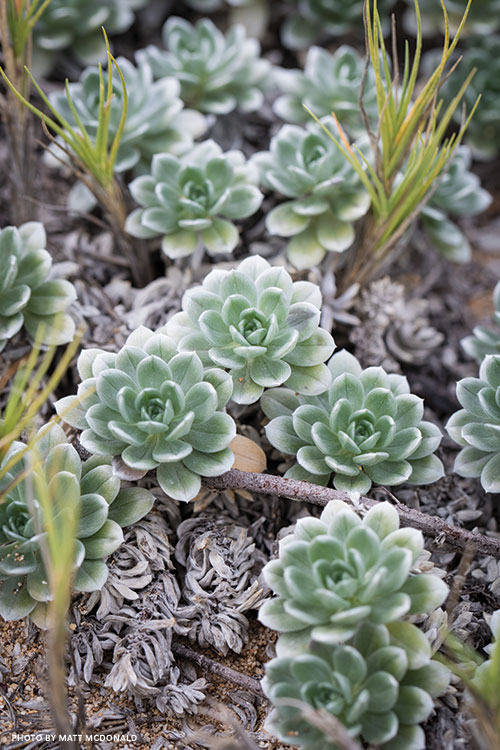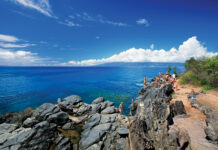
The tree infuses the soil with nitrogen, which in turn creates a biomass that’s more conducive to life. Even after the trees are removed, the nitrogen remains, and a chipper turns tree branches into mulch that accompanies every new plant.
“We could never have been this successful,” says Haase, “if the land hadn’t been covered in kiawe.”
For every new plant that springs up, something equally important grows with it: the human connection to the land.
“Our mission,” says Haase, “is to protect and restore these natural resources for the future. Hawaiian culture is inextricably tied to the land, and by restoring this we’re restoring that linkage.
“Imagine telling our youth about an ‘ohai tree, but they’ve never actually seen one. They don’t know what it means, because they don’t have any reference.”
I’d never seen an ‘ohai tree either before my day at Mokio, and if you’d asked me to try to find one at the dunes, I never would have thought to look down.
“It’s a tree that grows totally flat,” says Haase. “We’re standing at the edge of a two-dimensional forest, and it’s the first ‘ohai seen on this coast in over a hundred years.
“So,” he continues matter-of-factly, “be careful where you step.”
That’s a constant theme out here at Mokio—critical habitat and endangered species are everywhere you look.





